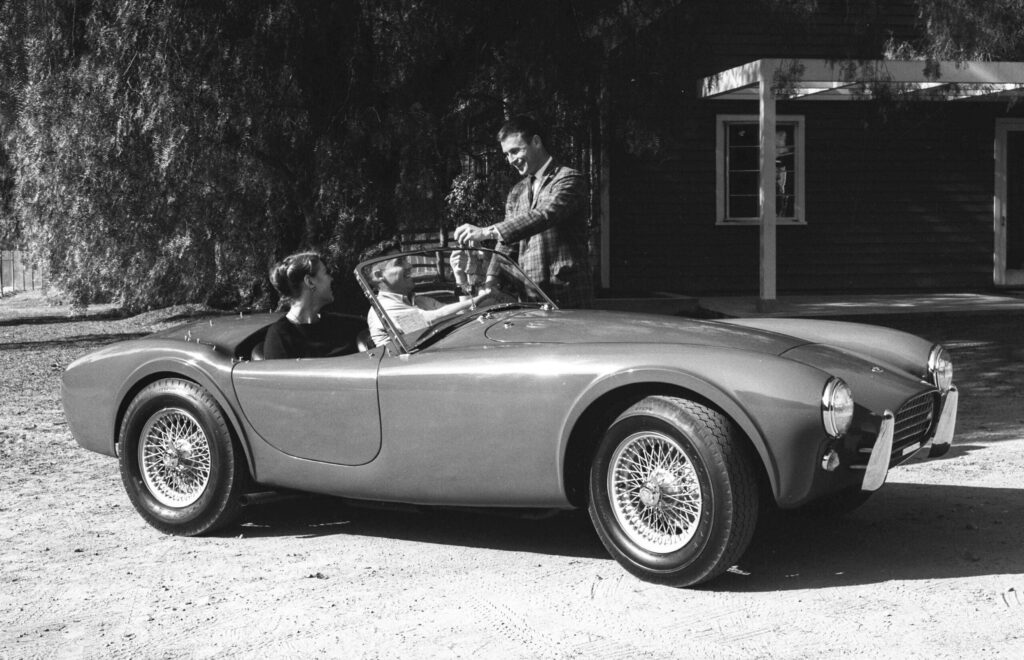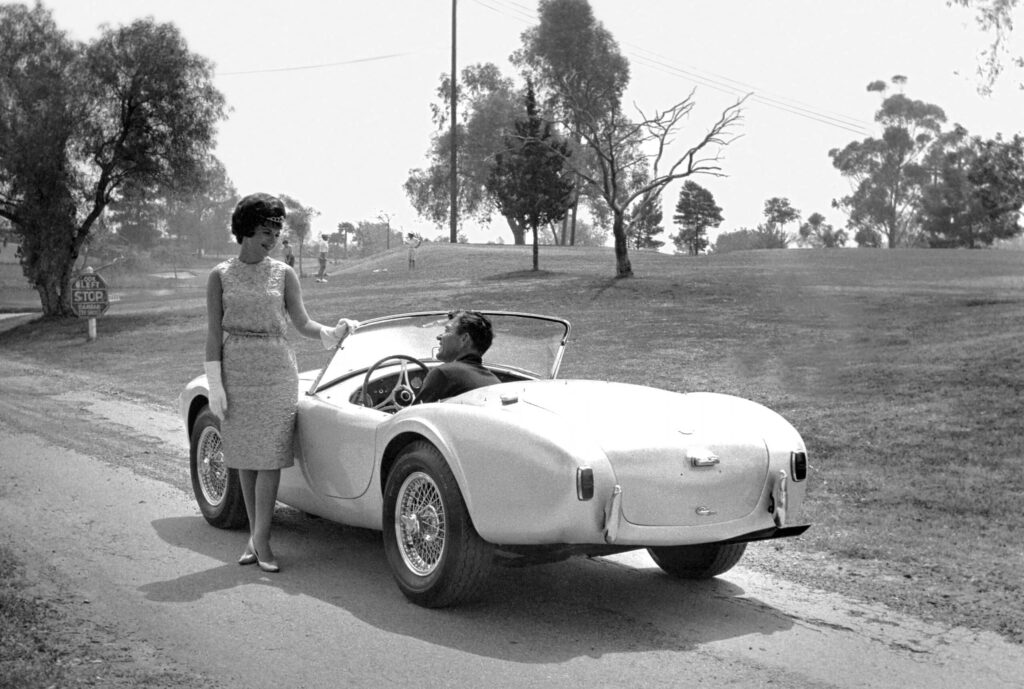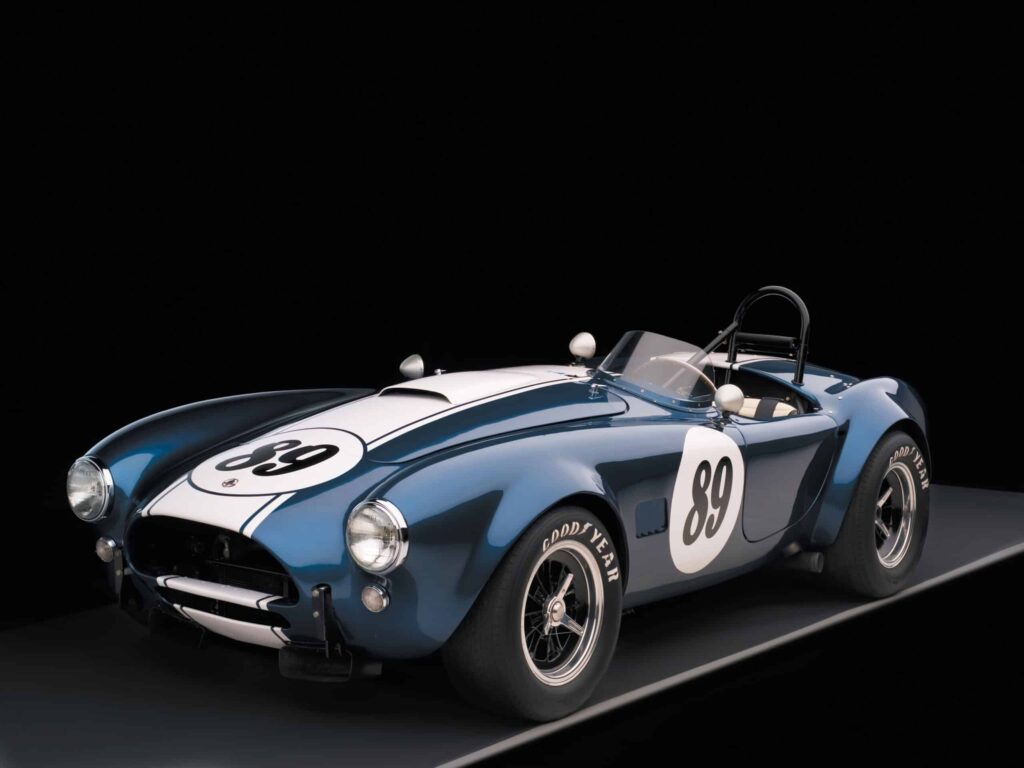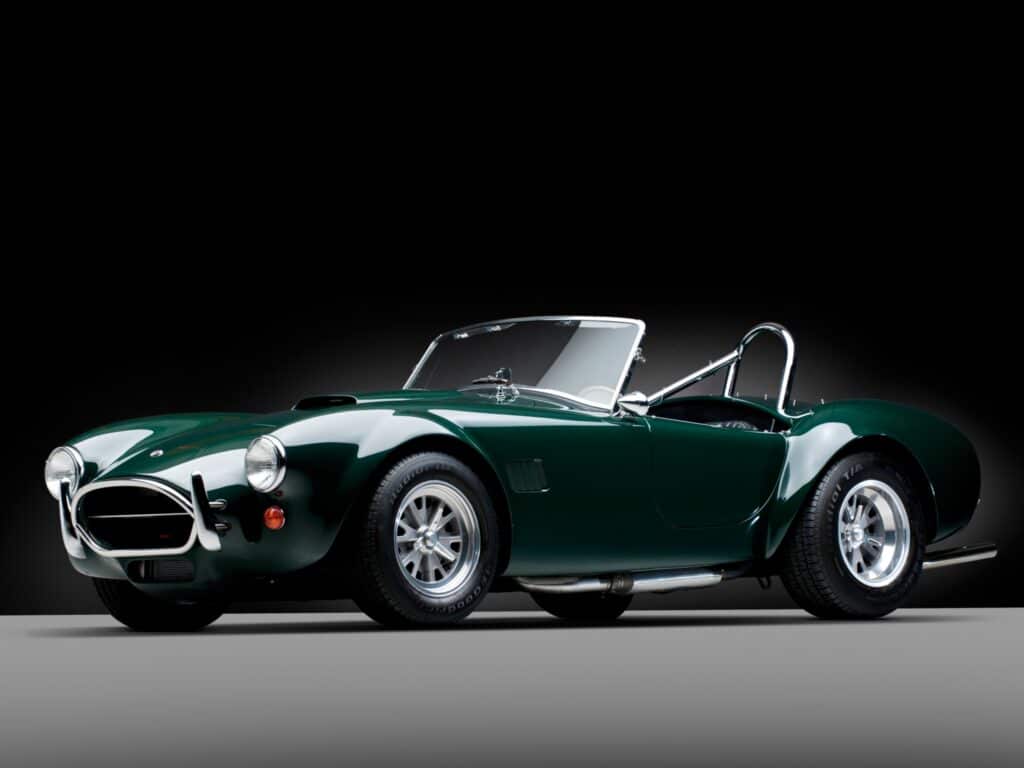From the small town chicken farmer to the winner of 1959 24 Hours of Le Mans, the life of Carroll Shelby was full of legendary events and paved with success. He was a man who beat the Enzo Ferrari in his own game, won Le Mans as a driver and as a team leader, and lived long enough to see generations and generations of Shelby Mustangs delivered to the customers. However, his most significant and iconic creation was based on a British roadster injected with the healthy dose of American V8 power, sold under Shelby AC Cobra. This little car established a unique legacy in the motoring world as one of the most successful race cars ever built and whose appeal was so big that it continued to be made long after Shelby stopped taking orders. Here is its story.
Back in the late 50s, Carroll Shelby was on top of the racing game. Behind the wheel of Maserati cars, he became one of the most successful American racing drivers and, in 1959, landed a gig with the Aston Martin team for 24 Hours of Le Mans. With his teammate Roy Salvadori, Shelby managed to win the prestigious race and list himself as one of the very few American drivers ever to do so. He was known as one of the hardest working people in the sports since he participated in Endurance and GT championships and long-distance road races like Carrera Panamericana in Mexico. However, nobody knew that Shelby drove under severe pain due to his heart condition and under heavy medications. In the 1960s, the pain was unbearable, and he was forced to retire in order to preserve his health. Even though he wasn’t racing anymore, he managed to stay in the car business as a car dealer and owner of the school of racing driving he opened in 1962. However, his biggest dream was to make a sports car under his own name despite everything.


At the same time, on the other side of the ocean, the small British company AC was facing a challenge. The Bristol company ceased the production of straight-six engines, which meant that the AC Ace roadster would be discontinued. Shelby heard the news and immediately contacted the AC Cars in Thames Ditton, offering them a deal. His idea was to import the engine-less bodies from the UK and install American V8s, giving the lightweight roadster a massive dose of power.
The idea was simple but genius, and Shelby started calling his connections in the car industry, trying to secure the supply of the engines as well as financial support. Not many people know that his first choice was Chevrolet small-block V8, but GM wasn’t interested. Then he turned to Ford Motor Company which supplied him with a couple of V8 engines and some parts for the prototype. To be honest, in 1961/62, nobody believed that Shelby could do anything but with his small and talented group of mechanics, Shelby completed the first prototype in a matter of days.
Legend says that he got the idea for the name in his dream, but in 1962, Shelby started promoting the Cobra very soon. The first Cobra, chassis number CSX2000 was powered by a 260 V8 engine delivering 260 hp, mated to 4-speed close-ratio transmission. With a curb weight of around 2000 pounds (920 kg), the car was a blast to drive, with 0 to 60 mph times of about 5 seconds and a top speed of close to 150 mph.

In 1962, those numbers were far better than any Corvette, which meant Cobra could outrun Ferraris in stoplight races. Shelby and his team were fascinated with the initial testing and the car’s potential. However, there was another problem.
To promote the car and gain further help from Ford, Shelby needed to get SCCA homologation for racing. The Sports Car Club of America rule book stated that in order to go racing, the manufacturer needs to build at least 100 examples. At that moment, Shelby had very few cars actually built (some sources say 12 complete vehicles), and there was no chance he could actually make 100 cars. So he decided to do a little trick. Shelby’s crew repainted every car multiple times, lent them to magazines in different colors, and published various photographs of cars in different versions. Using that as proof, he managed to win the approval of SCCA, which meant that Cobra was greenlighted for racing.

This was the start of Shelby Cobra’s stellar racing career. The car immediately dominated the American racing scene with its fantastic performance, lightweight, and dependability of Ford’s 260 and later 289 V8 engine. Very soon, Shelby Cobra crossed the ocean and tried its luck in Europe, where it was met with stiffer competition but almost equal success.
Ferrari, Jaguar, and Aston Martin were all threatened by this small but incredibly capable sports car that was on the brink of winning the 1964 sports car championship. It took all of Enzo Ferrari’s influence to cancel the last race of the season, which meant that Shelby would finish second. However, in 1965, Cobra came with a vengeance and claimed the title.
Even though the Shelby Cobra 289 was dominant on the race track, its high price and extreme performance meant that it was somewhat of a tough sell for people who were looking for an everyday sports car. It was 40% more expensive than a similar Corvette and close to the price of a Ferrari. The car was faster than all of its competitors, but the lack of a proper roof, tiny interior, and trunk space meant that only the hardcore enthusiasts would buy it. However, from late 1961 to 1965, Carroll Shelby managed to sell 655 Cobras with 289 V8 engines.


Shelby was the man who wasn’t afraid to push the boundaries, so in 1965 the new Cobra variant was in the pipeline. Using a modified chassis and body, Shelby Cobra 427 debuted. The 427 was the big block Ford engine, wider and heavier than the smaller 289 V8 unit. However, it delivered much more power and torque. With 410 hp in a body that weighed just over one ton, Cobra 427 was a low-flying rocket. The 0 to 60 mph was under 5 seconds, and the top speed, for those brave enough to try, was around 170 mph. Even though this was a proper beast of the car, it proved too much for some buyers, and only 343 examples were made until 1968.
The original Shelby Cobra production stopped in 1968. By that time, Carroll Shelby was heavily involved with the Ford GT40 racing team and Shelby Mustang production, so he didn’t have time to develop the Cobra model further. But, although the official Cobra was discontinued, the market life of this model had only begun. Due to fantastic performance, design, and surrounding legend, AC company decided to keep producing the bodies but instead of sending them to Shelby’s facilities in California, finishing the cars in Themes Ditton and selling them under the name AC Cobra.


The production started immediately after Shelby pulled the plug, and from 1968 to 1978, over 480 AC Autokratft Cobras were made. They all used Ford’s engines, the 289 or 427 V8s. After that, AC Cobra moved on to the next phase producing a Lightweight Roadster version that could be ordered with a more modern 5.0-liter V8 (302 cubic inches), but the most exciting model was introduced in 1997. Called the AC Cobra Superblower, this version of Shelby’s masterpiece was powered by a supercharged 5-liter V8 engine and delivered over 350 hp to the rear wheels. In later years, AC Cobra was available with a 6.2-liter GM engine with or without the supercharger proving that Shelby’s idea is still alive and kicking even 60 years after the CSX2000 has stunned the test drivers.






